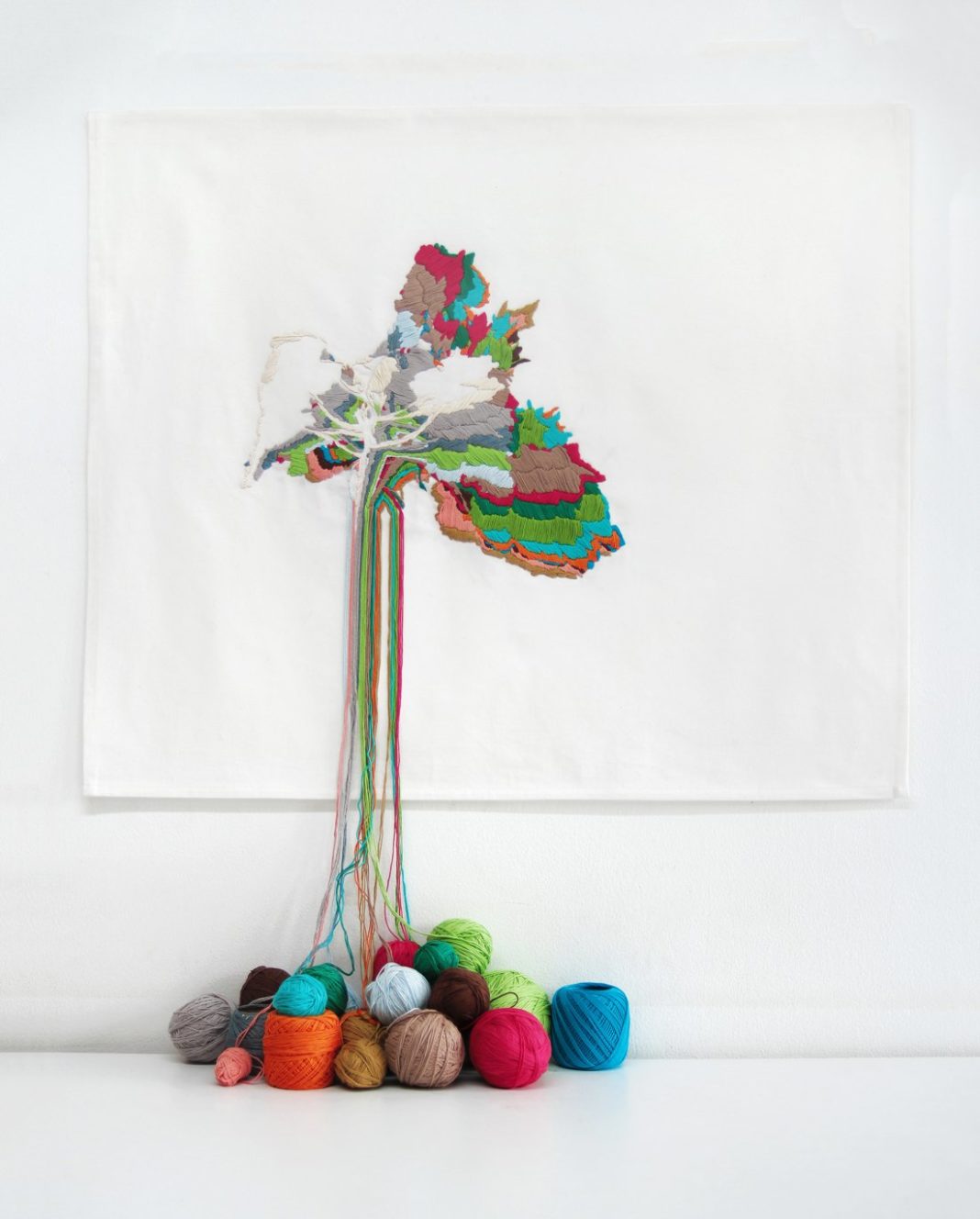The craft of embroidery is known for having remained largely unchanged since its ancient origins, but even this ancient handicraft has room for innovation. Barboza continues her exploration of installation-based tapestry with a new body of work that charts the growth of individual plants, while also expanding her practice into weaving with a new work of interconnected baskets.
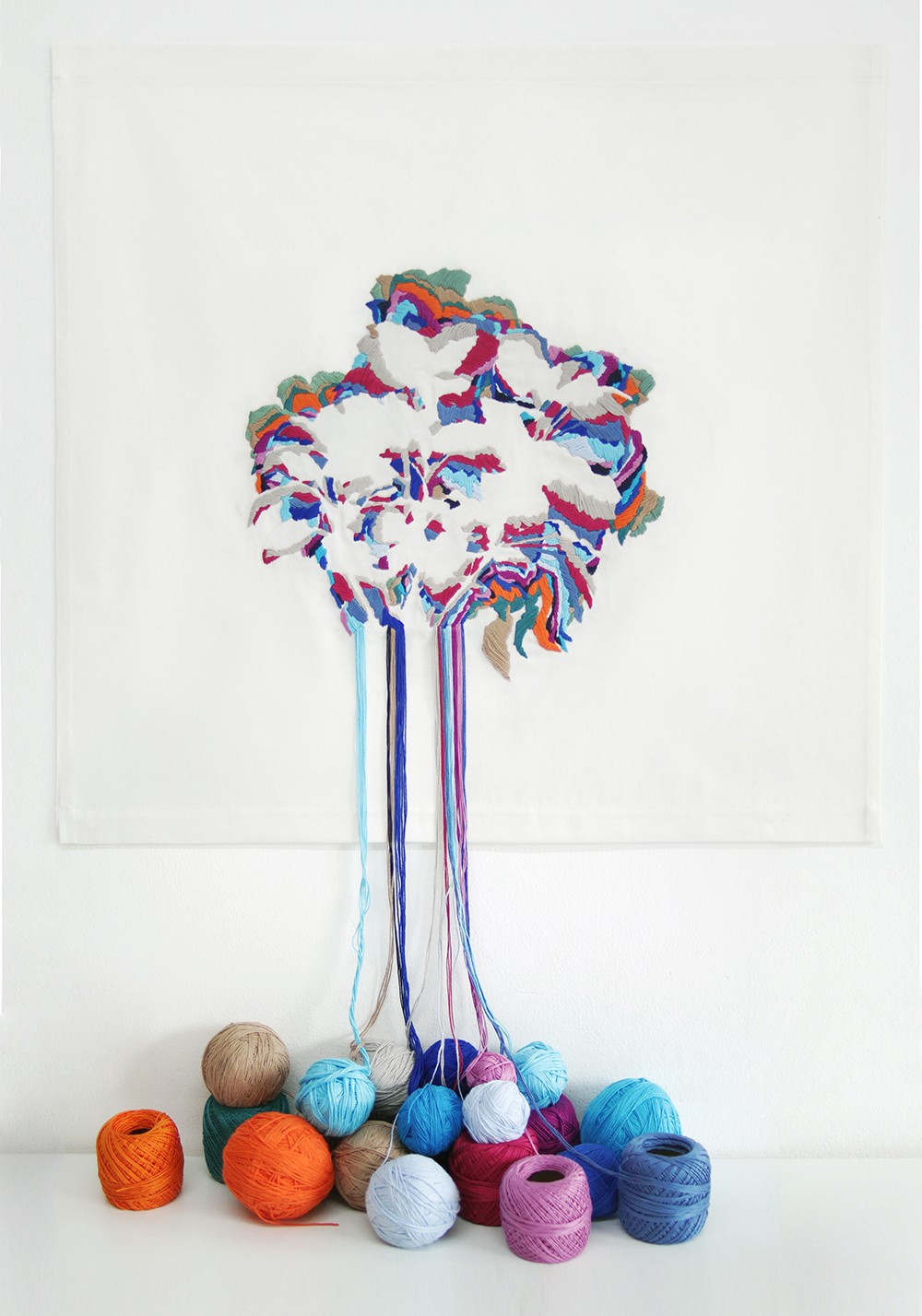
Born in Lima, Perú in 1980, Ana Teresa Barboza lives and works in her native city. She studied painting in the Faculty of Art at Pontifical Catholic University of Peru (PCUP). Using embroidery, yarn, and wool, she creates landscapes and other imagery that exists in the space between tapestry and sculpture. Emulating the flow of waves or grass, each piece breaks out of its embroidery hoop and tumbles down the wall upon which it is being displayed.
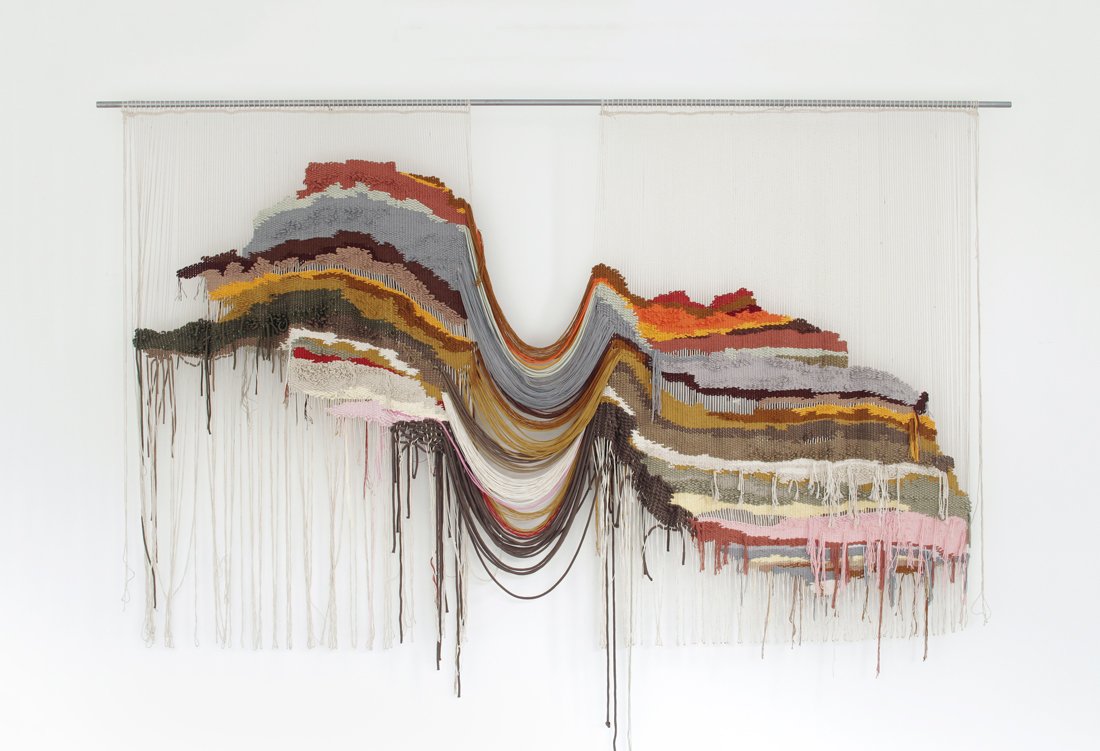
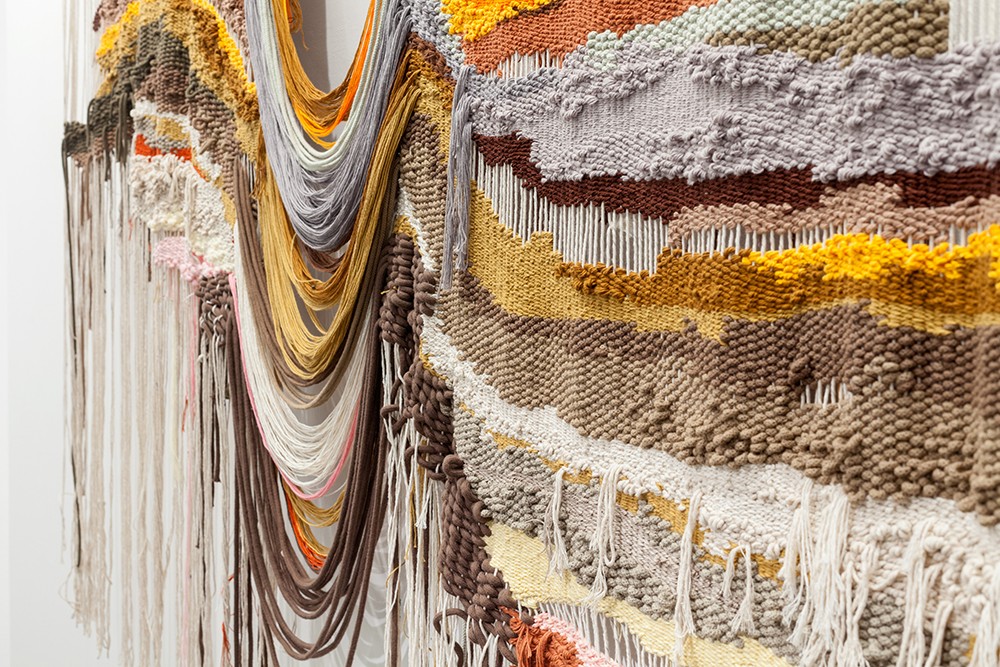
Barboza tends to focus on the human body in her artwork, but this Suspension series explores our relationship with nature; “Both embroidery and crocheting are techniques that require time. I use these techniques in order to make a connection between manual work and the processes of nature; creating thread structures similar to the structures that make a plant for example,“ she told.
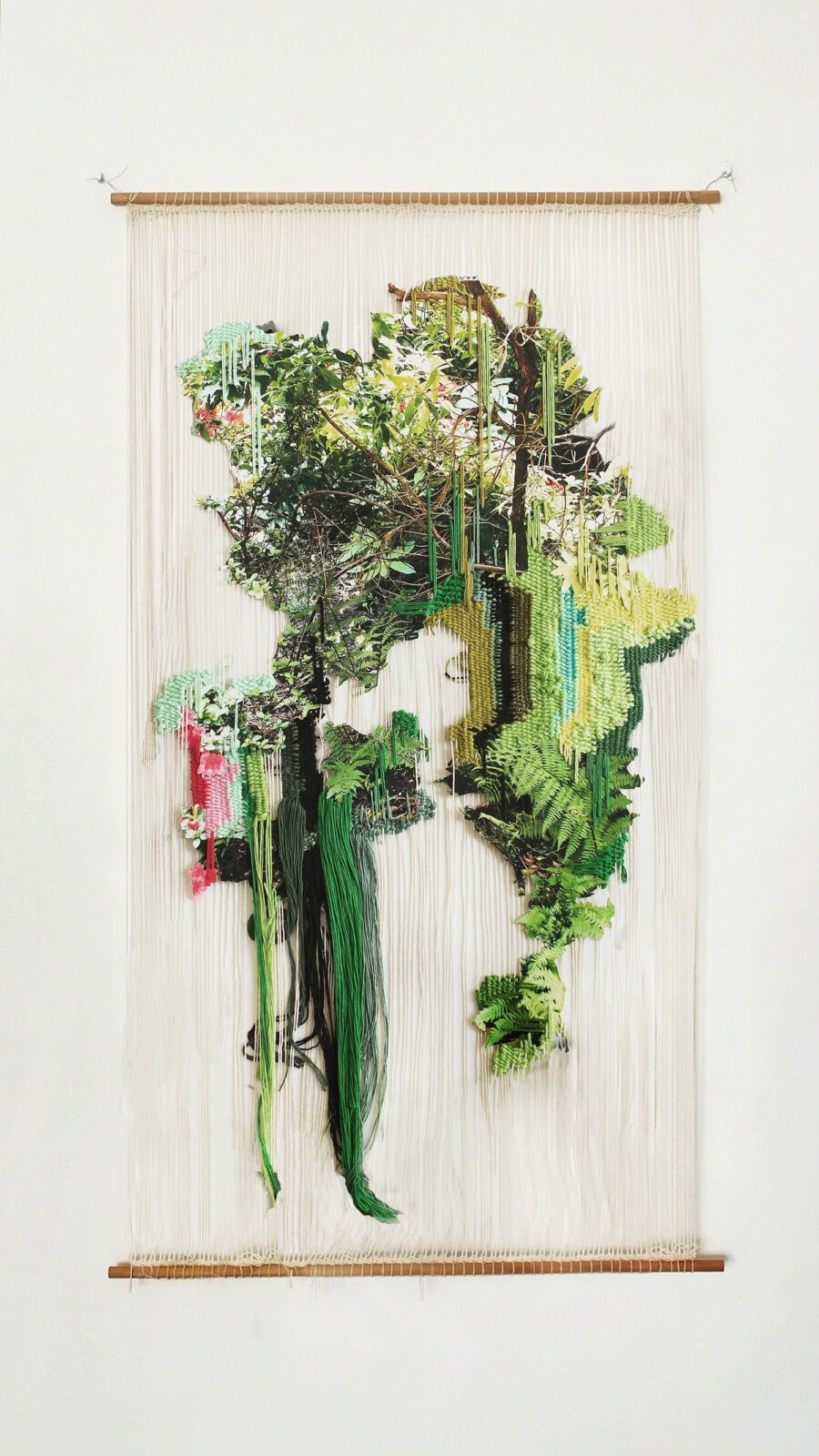
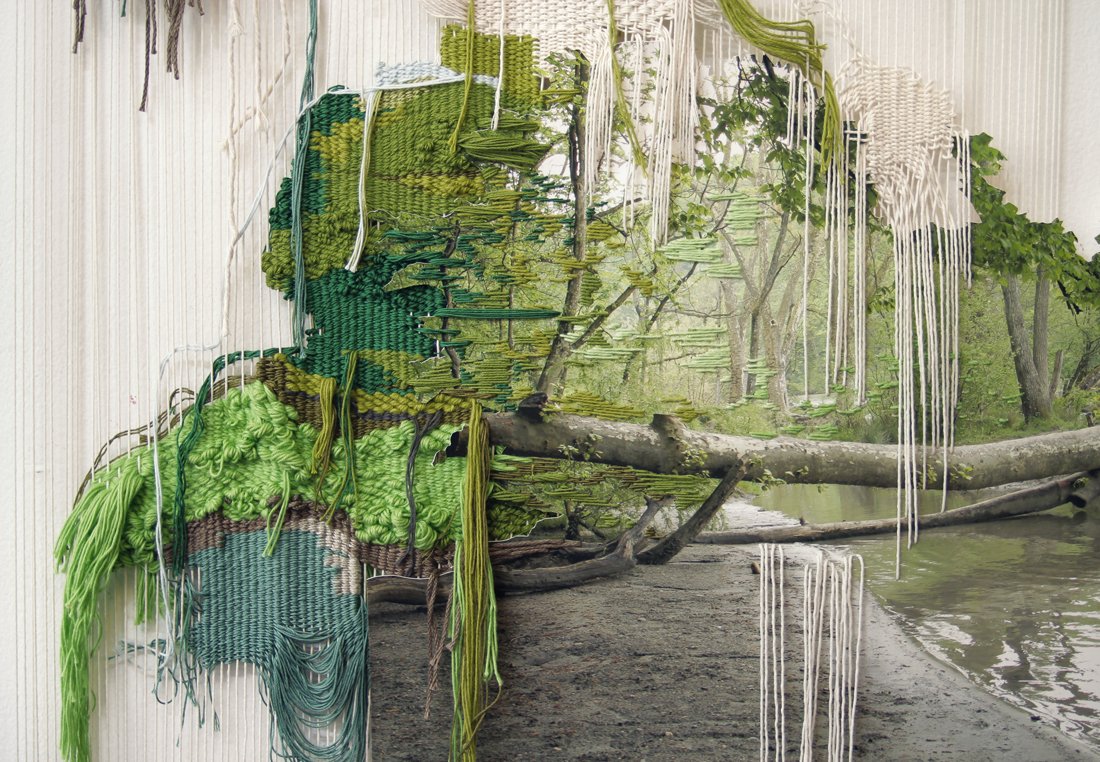
Her series Increase charts a plant’s shadow for 15 days, steadily tracing its growth and movement over the two week time space. Balls of yarn lay at the foot of each tapestry, providing a visualization of the diminishing material as it is slowly added to the changing portrait. The colorful embroidery provides a charged glow around the white space of the original plant, its increasing mass illustrated in a collage of jagged shapes and vibrant hues.
Barboza’s new work United Baskets, retreats from color altogether, instead focusing on process and shape. The piece is a collection of seven interconnected baskets, which took the artist 30 days to weave from bundles of Huacho reed. The series of vessels vary in size and position, yet are each seamlessly linked throughout the full 10 by 10 foot composition.
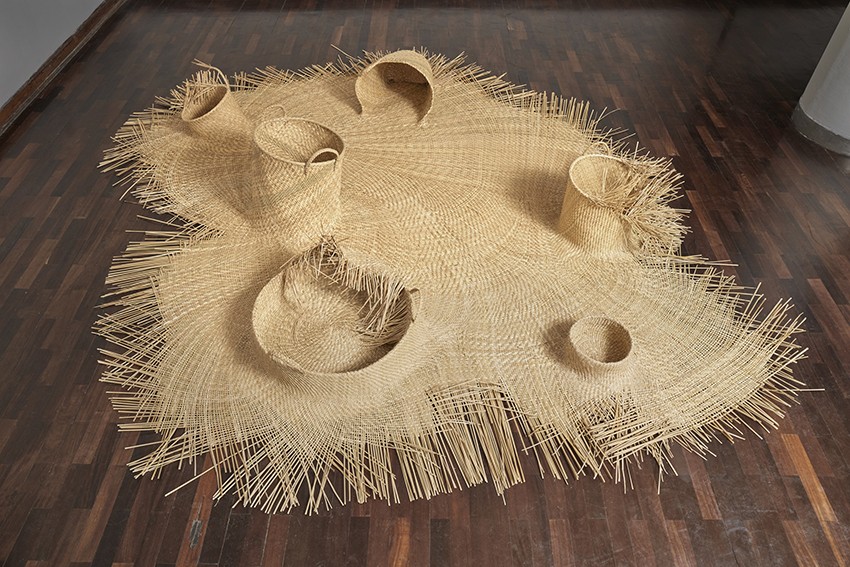
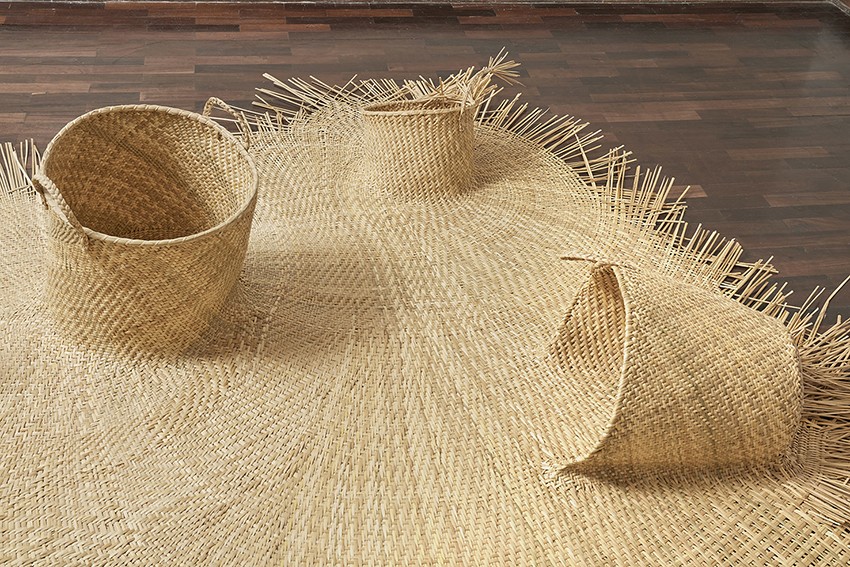
Although Barboza now works with textiles, she previously studied painting at Lima’s Pontifical Catholic University. You can see more of her embroidered and woven installations on her website here.






